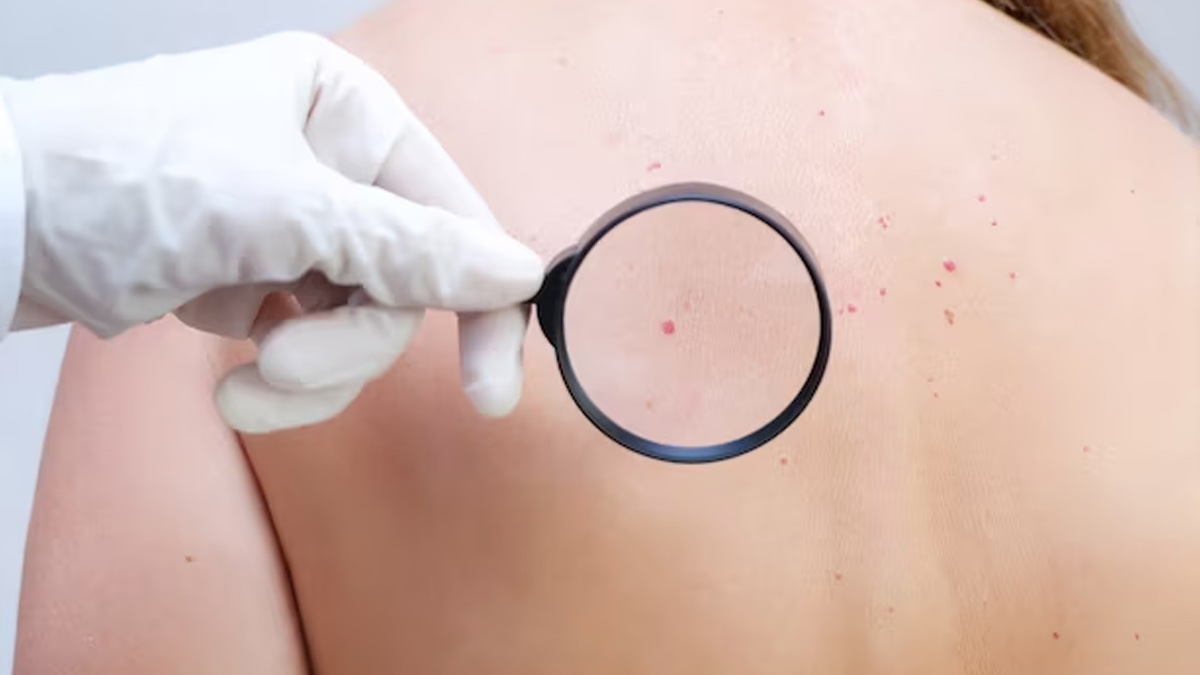
Ever noticed red spots on your skin? They don’t itch or swell, but continue to grow as you age. These tiny bumps could be Cherry Angiomas. Made of small blood vessels, they are reddish or purplish in colour and can occur in anyone. In an interaction with Only My Health, Dr Usha Beloskar, Consultant Dermatologist, S L Raheja Hospital, Mahim - Fortis Associate, discusses this condition in detail, talks about its causes and ways one can remove it.
Table of Content:-
Also Read: Expert Answers: Does Drinking Water Really Improve Your Skin Health?
What Are Cherry Angiomas?

“Cherry angiomas, also known as cherry hemangiomas, are characterised by small bright red dome-shaped bumps on the skin,” said Dr Beloskar, adding, “They usually range in 0.5-6 mm in diameter and are typically found on the chest and arms, with their number increasing as one ages.”
According to the doctor, these should not be scratched as they may bleed. The colour and appearance of these angiomas on the skin give rise to the term "cherry," as they often form in groups. Talking about the difference between cherry angiomas and cherry hemangiomas, Dr Beloskar said, “The difference lies in the cells they are composed of. Basically, the angiomas are made of lymphatic vessels or blood vessels, whereas hemangiomas are made of blood vessels only. Cherry angiomas is prominently found in adults, while hemangiomas is found in infants or children.”
‘Not A Sign Of Cancer’
Interestingly, cherry angiomas are typically asymptomatic and should not cause itchiness. If you experience itchiness near angiomas, it is important to avoid scratching the area to prevent irritation and bleeding. If the bump on your skin continues to itch and causes discomfort, it is advisable to contact your healthcare provider for proper treatment, advised the doctor. Differential diagnosis should be considered, including allergy, acne, dry skin, chickenpox, or shingles, she added.
In addition, the doctor shared that cherry angiomas are benign tumours that consist of an abnormal proliferation of blood vessels and are not related to cancer.
“Cherry angiomas can affect anyone, but they are more commonly observed with age and do not show any differences based on race or gender. They can occur in both healthy individuals and those with pre-existing medical conditions and are often seen in pregnant women too. Cherry angiomas are harmless and benign, not indicating the presence of any other medical condition. They can, however, be mistaken for melanoma or moles, which is why it is important to note that cherry angiomas are not a sign of cancer,” she added.
Also Read: Obstructive Sleep Apnoea: How To Reduce Risk For Better Heart Health
Risk Factors To Note

Although the exact cause of cherry angiomas is unknown, research has identified several factors that can contribute to their development, such as ageing, pregnancy (hormones), genetic mutations, and exposure to certain chemicals like topical nitrogen mustard, bromides, and butoxyethanol.
Can Cherry Angiomas Be Removed?
According to Dr Beloskar, cherry angiomas can be removed through various methods, including electrodesiccation (using an electric needle), radio frequency, liquid nitrogen (cold gas), or laser treatment.
“There is a possibility that cherry angiomas may reappear on the skin after removal. However, their recurrence should not be a cause for concern as they are benign and harmless,” she concluded.
How we keep this article up to date:
We work with experts and keep a close eye on the latest in health and wellness. Whenever there is a new research or helpful information, we update our articles with accurate and useful advice.
Current Version